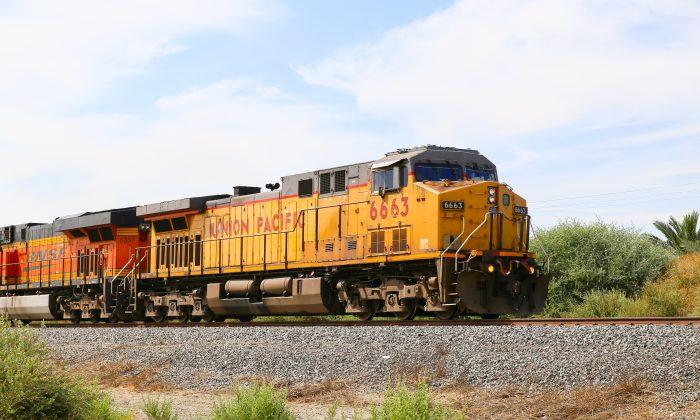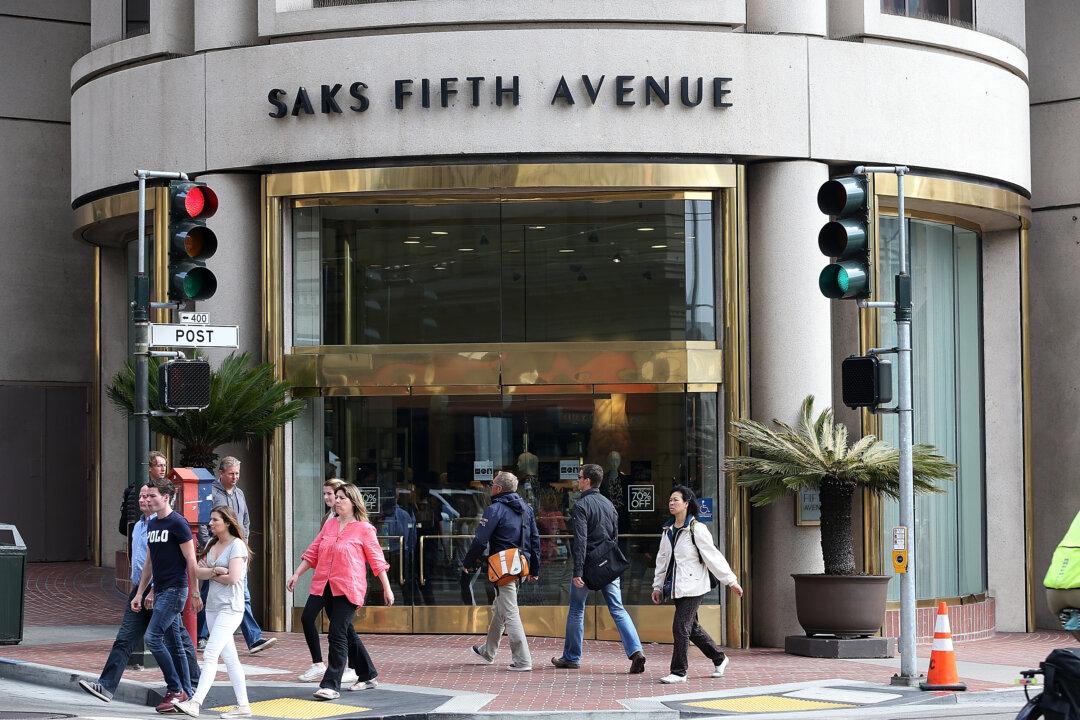LOS ANGELES—Thieves continue to target shipping containers loaded onto Union Pacific trains in the Los Angeles region, leaving open boxes strewn across the ground around the tracks.
“We are aware of the problem, and we’re working to resolve the issue, and we’re working with local law enforcement in that county,” Union Pacific spokeswoman Robynn Tysver told The Epoch Times.
Cargo theft reports along the West Coast of the United States have increased 42 percent year-over-year, according to CargoNet, an industry organization dedicated to the prevention of cargo theft.
“This comes as no surprise, as California continues to struggle with frequent thefts of high-end computer electronics shipments,” CargoNet reported.
A law enforcement task force made up of representatives from the Los Angeles Police Department, the California Highway Patrol, and the Union Pacific Railroad Police, was working on the problem, according to the LA County Sheriff’s Department.
“We work with them and share intel but we are not involved in this particular story,” Deputy Trina Schrader told The Epoch Times in an email.
CargoNet reported 359 supply chain thefts and fraud incidents across the United States and Canada in the third quarter of 2021.
“Cargo thieves continued to show a strong preference for computer electronics shipments, and nearly 70 percent of these thefts in the third quarter of 2021 occurred in California,” CargoNet reported.
Officials said thieves were attracted to the lingering containers on trains.
The Port of Los Angeles reported on Nov. 29 that the average dwell time cargo ships remained in the terminal was 5.7 days. Containers stayed an average of 8.7 days in the terminals. There were 2,580 containers waiting on the rail docks, waiting to be loaded, and 66,046 containers stored at the docks.
The docks had about 77,000 empty containers at the terminal and off-dock depots, according to the Port of Los Angeles.
“The more that the supply chain in general is backed up, the more cargo you’re going to have sitting. And that creates a bigger opportunity for thefts,” Scott Cornell, Travelers crime and theft specialist, told CBS “MoneyWatch.”
An industry report issued Nov. 29 showed a slowdown of inbound cargo containers arriving at the twin ports.
The Long Beach and Los Angeles ports reported a combined 6.2 percent decline in inbound loads from a year earlier, according to the latest West Coast Trade Report issued by the Pacific Merchant Shipping Association (PMSA) issued Nov. 29.
The Port of Long Beach reported that it handled 385,000 inbound loads and 122,214 outbound loads in October. Outbound loads were up 6.6 percent year-over-year but down 7.2 percent from two years ago.
Long Beach handled 7,884,565 shipping containers, a 21 percent gain over last year and 23.8 percent more than it had moved in October 2019, the PMSA reported.
The Port of Los Angeles posted a 7.8 percent drop in inbound loads from a year ago. As with Long Beach, the declines were not because there were fewer containers waiting to be discharged; it was that there was less room available to accommodate them, according to the PMSA.
“A better guide to the port’s performance is that inbound loads this October were 19.0% higher than in the last arguably normal October in 2019,” according to the report.
Box counter John D. McCown, who publishes the McCown Report, noted that inbound containers to the nation’s 10 largest ports increased by 1.2 percent over last year.
The Southern California ports planned to start charging container carriers an extra fee this week for containers that were left at the docks, but port officials delayed the implementation again on Nov. 29.
“Since the fee was announced on Oct. 25, the twin ports have seen a combined decline of 37% in aging cargo on the docks,” according to a release issued by the ports.
The executive directors of both ports will reassess fee implementation after another week of monitoring data, port officials said.
The ports plan to charge cargo ships $100 for each container that remains on the docks, increasing the amount by $100 increments each day until the unit leaves the port. The fee would be charged after nine days if scheduled to be moved by truck, and after six days if scheduled for rail transport.





